Grooming your dog is a crucial aspect of their overall health and well-being. Regular grooming helps maintain their appearance and prevents skin infections, matting, and other health issues.
With the ongoing pandemic, taking your furry friend to the groomer may not be an option. But that doesn’t mean you can’t groom them at home. Grooming your dog at home can be an excellent bonding experience for you and your furry companion, saving you money in the long run.
However, grooming your dog at home can be intimidating, especially if you are a first-time pet owner. That’s why we have put together a comprehensive guide on how to groom a dog at home. We will take you through 7 simple tips that make at-home grooming sessions a breeze. From brushing to trimming hair and nails, we have got it all covered. We will also teach you how to check your dog’s skin as you groom and ways to teach your dog to enjoy grooming sessions.
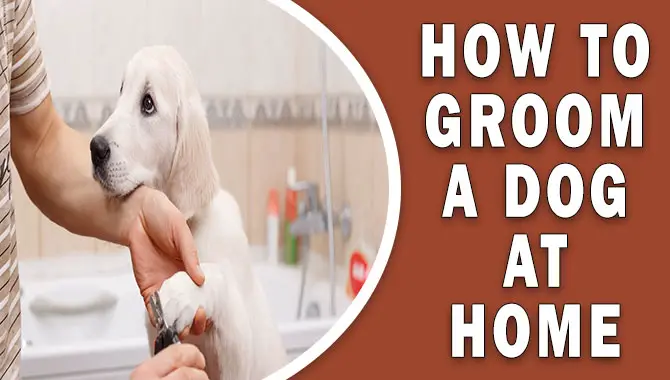
7 Simple Tips For How To Groom A Dog At Home
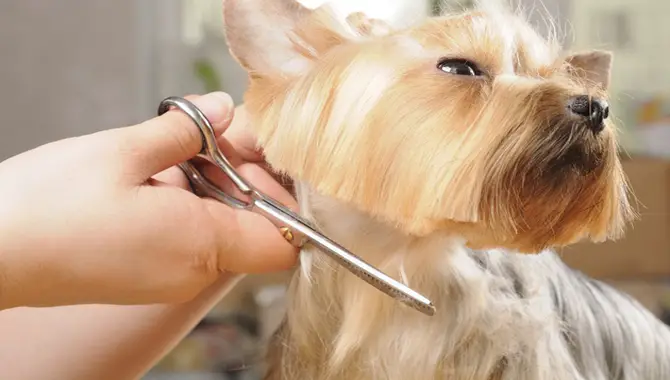
Grooming your dog at home can be a great way to save money and bond with your furry friend. However, it is important to approach the task with care and caution to ensure that you do not accidentally harm your pet. Before starting the grooming process, ensure you have all the necessary tools and supplies, including brushes, clippers, shampoo, and towels.
Grooming your dog at home can be a great way to save money and create a bond with your furry friend. But where do you start? Here are 7 simple tips for how to groom a dog at home. With these tips in mind, you can keep your pup looking and feeling their best without ever having to leave the house.
1. Regularly Brush Your Dog’s Coat To Prevent Matting
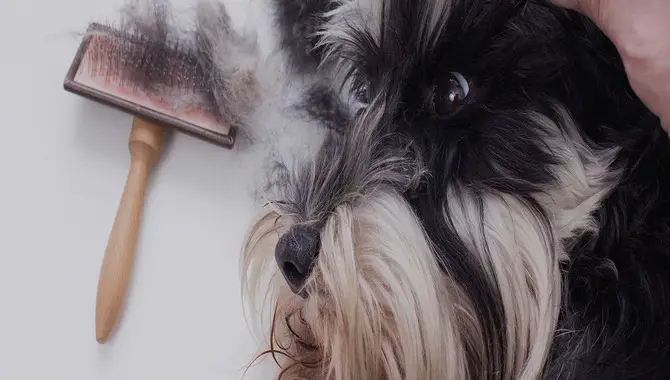
Keeping up with regular grooming for your furry friend is crucial for maintaining good hygiene and overall health. Regularly brushing it is an excellent way to ensure that your pup’s coat stays healthy and shiny. Not only does this help distribute natural oils in their coat for shine, and it promotes healthy skin by preventing matting discomforts.
Use a slicker brush to gently detangle tangles as you brush all areas of their body with care and attention to detail. Remember to seek the help of a professional groomer if necessary when dealing with stubborn mats or using a de-matting tool.
2. Trim Your Dog’s Hair – But Use Caution
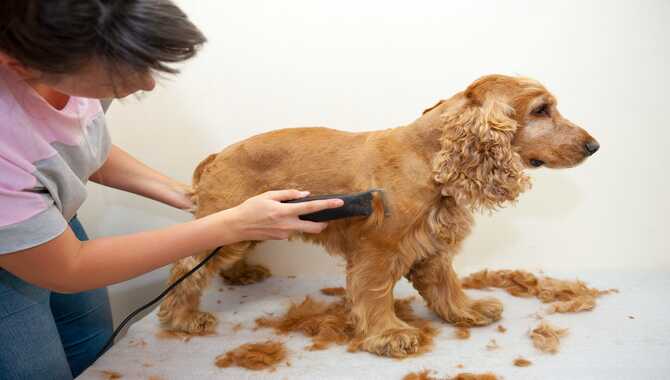
Trimming your pup’s hair at home can be tricky, but it can be done safely and effectively with the right precautions. Choose the proper grooming tools, such as clippers, scissors, and brushes, based on your dog’s coat type and breed.
Start with brushing out any mats or tangles in their coat before beginning the clipping process, and proceed with caution when trimming around sensitive areas such as the face, ears, and paws. It is always good news if you can practice positive reinforcement techniques during the session to make it an enjoyable experience for your furry friend. Remember that if you are unsure or uncomfortable with at-home grooming, seek assistance from a professional groomer or veterinarian.
3. Safely Trim Your Dog’s Nails
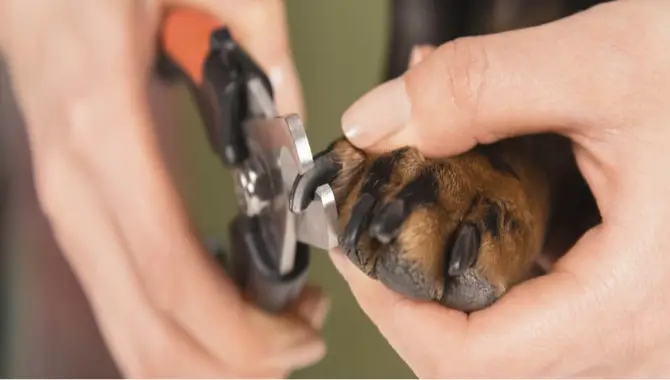
Trimming your furry friend’s nails doesn’t have to be scary. A proper technique and grooming equipment are all you need to get started with trimming those claws. Begin by choosing appropriate tools like a pair of nail clippers or a Dremel tool for trimming. Before commencing any trimming task, understand your pet’s nail structure well.
In case of any accidental bleeding due to excessive trimming or cutting off nerves inside their nails (quick), applying cornstarch or styptic powder may help stop it quickly. Offering treats and incentives during and after grooming sessions can make your pets feel happy about grooming sessions.
4. Check Your Dog’s Skin As You Groom
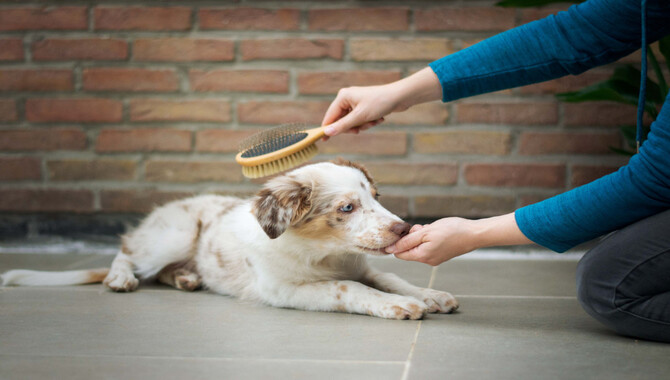
Maintaining hygiene when grooming dogs at home is essential. While trimming your pup’s hair with scissors or clippers, ensure you use the right tools for your breed to avoid mats and tangles. It’s always good news when you can groom your furry friend at home without seeking a professional groomer’s help.
However, it’s crucial to regularly check their skin for signs of irritation, redness, and lumps or bumps that may need veterinary attention. Keeping a slicker brush handy helps prevent matting in long-haired dogs, while an undercoat rake works well for short-haired ones. Use high-quality conditioner and shampoo while grooming as they keep their coat healthy and beautiful.
5. Teach Your Dog To Enjoy Grooming Sessions
Regular grooming is essential to caring for your furry friend’s hygiene and wellness. Teaching your pup to enjoy these grooming sessions early in their life is crucial. Positive reinforcement like treats and praise can make it a pleasant experience for them.
You can gradually introduce new techniques, such as brushing with a slicker brush or undercoat rake, while avoiding overwhelming them. Ensure you take regular breaks if dogs become stressed or anxious during the sessions. Distractions like toys can be helpful during these times.
6. Regularly Check Your Dog’s Ears
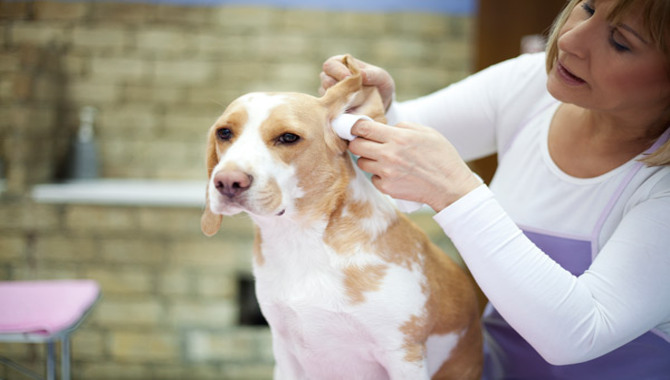
Maintaining the proper hygiene of your pup is crucial for their well-being. Pet owners can regularly check their ears during at-home grooming sessions to ensure that their furry friends are healthy and happy. A gentle cleanser and cotton balls or pads to clean the dog’s ears can prevent infection and discomfort caused by discharge or wax buildup.
Avoid using Q-tips as they can cause bleeding and irritation in the ear canal. Remember to take extra care while cleaning the ears of long-haired dogs to avoid mats in the fur around their ears. Following these tips from professional groomers and veterinarians and incorporating regular grooming sessions into your routine can keep your dog healthy and happy.
7. Don’t Bathe Your Dog Too Often
Keeping your furry friend clean and healthy is essential by giving them regular grooming sessions at home. While it may be tempting to bathe your dog frequently, it’s best not to overdo it. Bathing your pup too often with a human shampoo or soap can harm their coat and skin as it may cause dryness or itching.
It would be best if you gave them a bath once every three months using a mild shampoo specifically designed for dogs. For short-haired pups, bathing once every six months should suffice. Regular brushing and at-home grooming sessions can help maintain good hygiene for your furry friend without needing frequent baths.
These Tips Will Help The First Few At-Home Grooming Sessions Go Smoothly
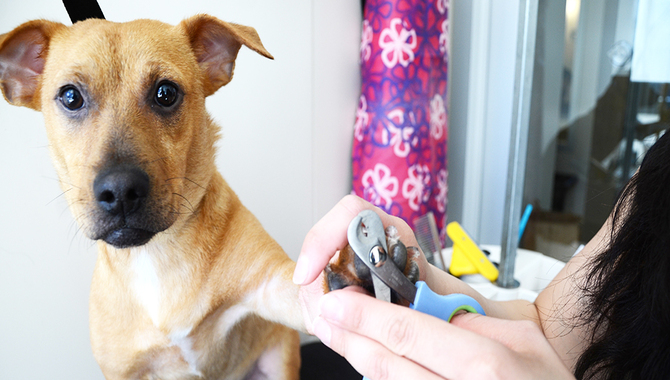
If you’re wondering how to groom your pup at home without stressing them out, don’t worry – it’s easier than you think! First things first: introduce new tools gradually to avoid overwhelming your dog. Start with a soft brush or towel before moving on to more intense tools like clippers or scissors.
Offering treats and positive reinforcement is key – this will help create a positive association with grooming sessions. If your pup seems stressed or uncomfortable, take breaks and resume later.
Gradually increasing the length and intensity of the sessions will also help in this regard. And remember – consistency is key! Regular brushing, shampooing with warm water and high-quality products, trimming dead hair and mats from their coat, and regularly checking their ears, teeth & nails for hygiene purposes are all part of being a responsible pet owner who can groom their furry friends at home just like professional groomers do.
When Bathing Your Dog, Keep These Tips In Mind

While grooming your pup at home, it is crucial to take care while bathing them. It’s always good news when you can groom your furry friend yourself! When washing your dog, remember not to bathe them too often as this can strip their skin and coat of natural oils, leading to dryness and irritation.
Instead, opt for warm water and use a mild shampoo specifically designed for dogs to avoid skin irritation. Rinse thoroughly to remove all shampoo residue from your dog’s skin and coat. After washing them, dry your pet’s fur with a towel or dryer on a low setting to prevent him from getting cold.
Conclusion
Grooming your dog at home can be a rewarding experience for both you and your furry friend. With the right tools and techniques, you can keep your dog looking and feeling its best without taking them to a professional groomer.
By following these expert tips and tricks, you can ensure that your dog looks and feels their best without spending much money at the groomer. However, it’s important to introduce grooming slowly and positively to avoid overwhelming your pup.
And always use caution when handling sharp tools or trimming near sensitive areas like the eyes or ears. With patience, practice, and these helpful tips, you’ll soon be a pro at grooming your dog at home. We hope now you understand how to groom a dog at home.
Frequently Asked Questions
How Do You Groom A Dog At Home For Beginners?
For novice dog groomers, start by detangling and trimming your dog’s coat. Be cautious when clipping your nails, and wash them with pet-safe products. Finish up by trimming excess hair around their eyes, ears, and paws before giving them a final brush.
Is It Easier To Groom A Dog Wet Or Dry?
Generally, grooming a dog is easier when its fur is wet as it is easier to detangle, comb, and clip. However, some dogs may not be comfortable bathing and may become agitated or stressed. In such cases, using dry shampoo or grooming wipes can be useful alternatives.
What Is The Best Way To Groom A Dog At Home?
To groom your dog at home, brush them regularly to prevent tangles, use proper tools like clippers and nail trimmers, and bathe with dog shampoo. Be kind and gentle while grooming and rewarding with treats for positive reinforcement.
How Can I Take Care Of My Dog Without Going To The Groomer?
You can keep your dog clean and healthy at home by regularly brushing and bathing them, trimming their nails, and using safe grooming products. However, seek professional advice if you’re unsure how to groom them properly to avoid causing discomfort or harm.
Are There Any Specific Techniques For Grooming Different Types Of Dogs?
Grooming techniques vary depending on a dog’s coat type and length. Breeds with long hair require frequent brushing and trimming, while dogs with thick undercoats may need de-shedding tools. Research your dog’s breed to ensure proper care.

Aquarium passion is all about connecting with the aquatic life and providing education to the public on the importance of these creatures. We showcase a wide variety of marine life through our exhibits as well as working with schools to provide unique learning opportunities for students of all ages.

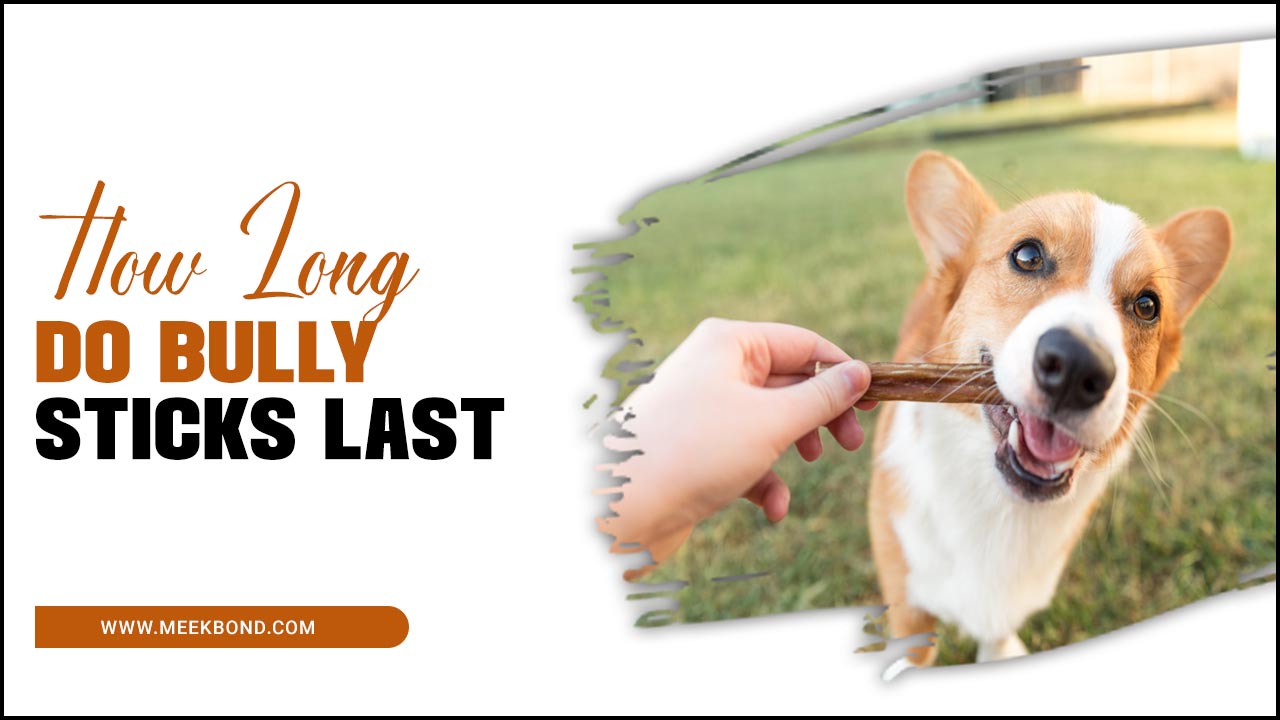
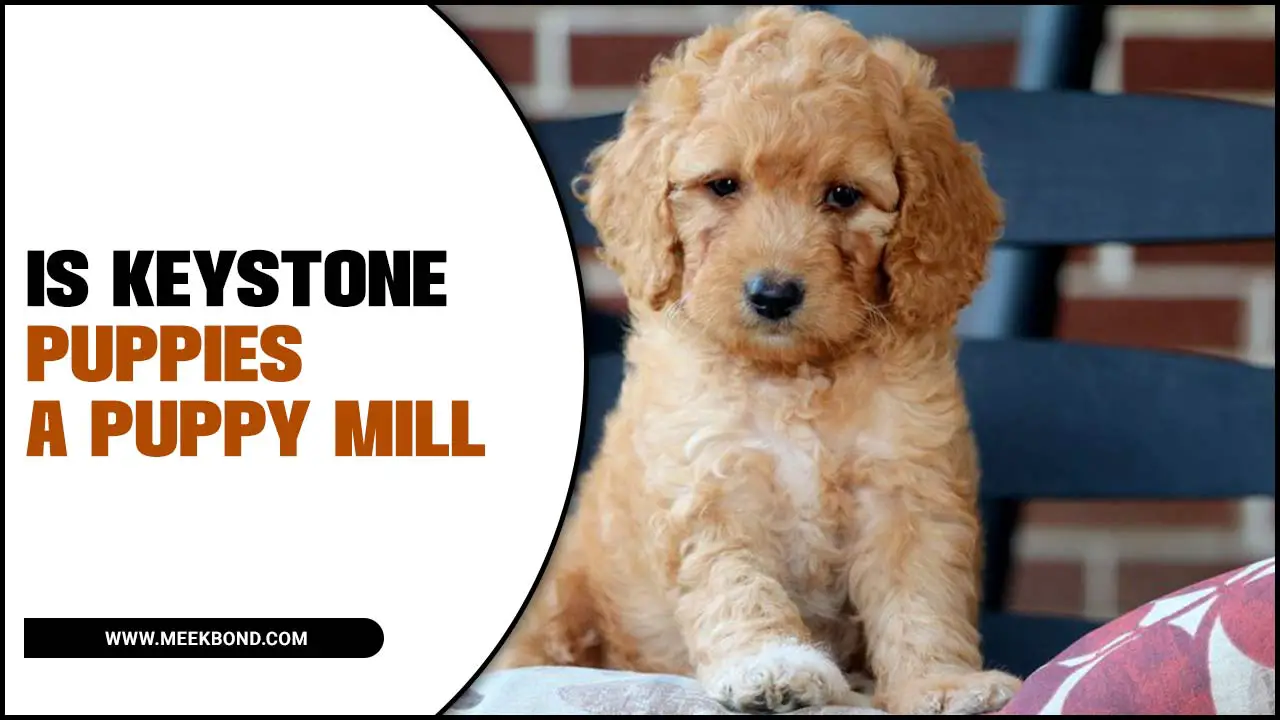
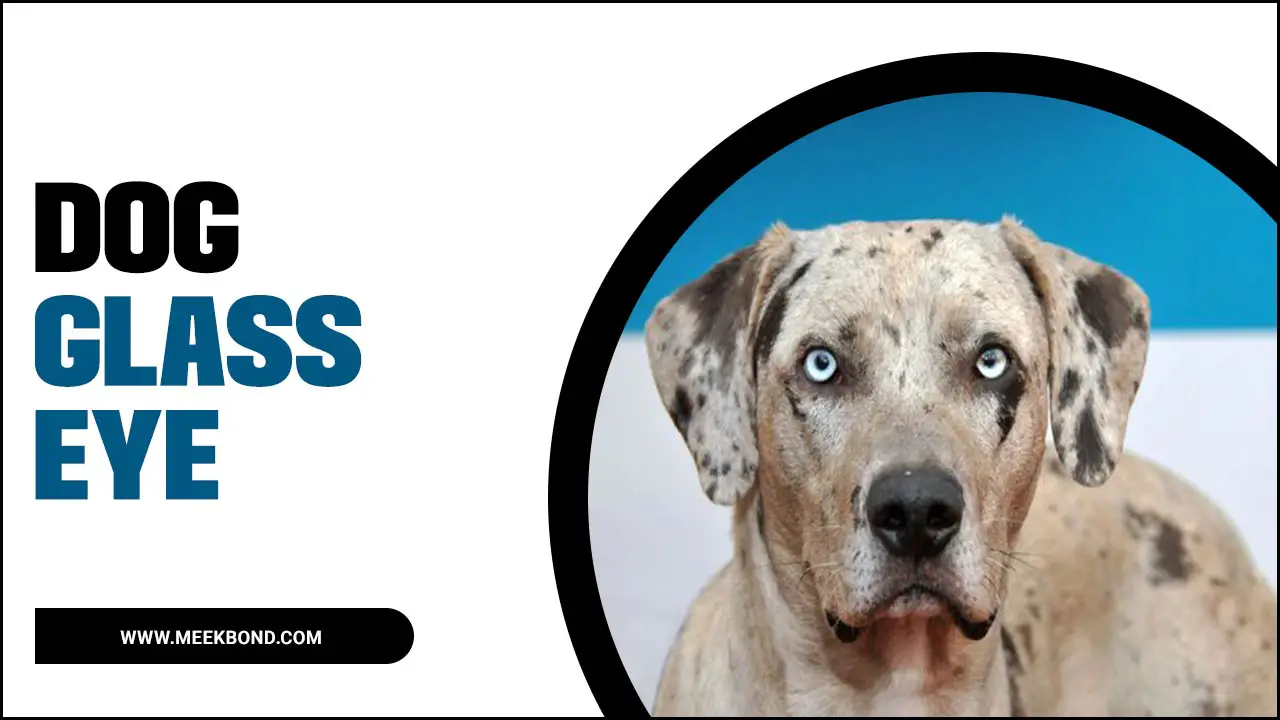
![10 Dangerous Items Dogs Like To Chew On [You Should Know]](https://meekbond.com/wp-content/uploads/2023/01/Dangerous-Items-Dogs-Like-To-Chew-On.jpg)




